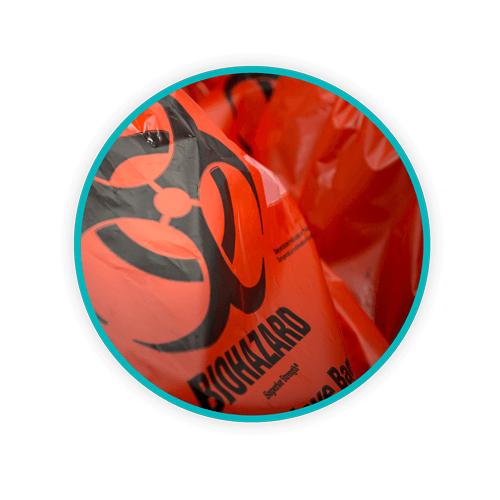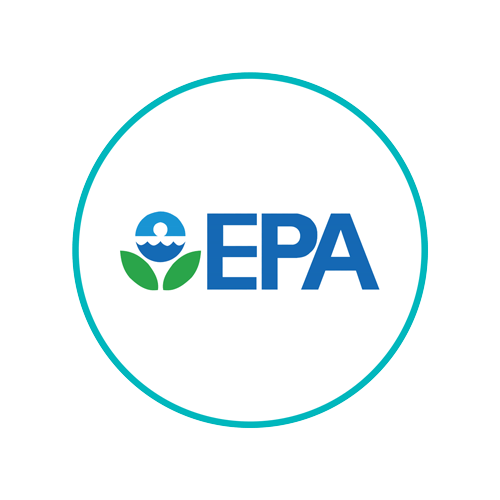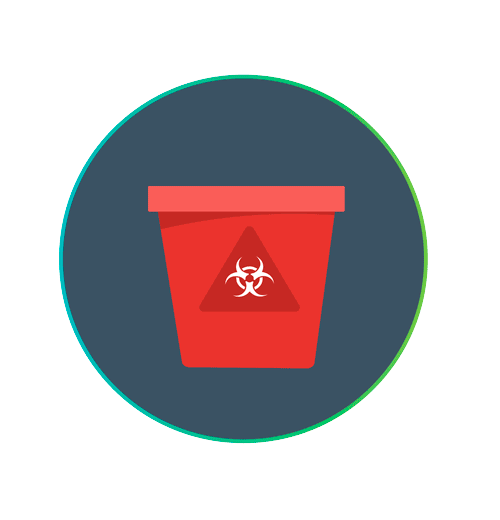What is Pathological Waste?

Identification of different kinds of medical waste streams is an essential part of the healthcare waste management process that encourages safety, reduces injury or exposure to potentially contaminated waste, and most importantly, maintains compliance with state and federal regulations for disposal.
One waste stream that can be difficult to define properly is pathological waste. So, what is pathological waste—and how is it properly handled?
TOPICS WE WILL COVER:
1 / What Is Pathological Waste
2 / The Role of Pathological Waste in Research and Testing
3 / Handling Pathological Waste
What Is Pathological Waste?
Pathological waste is defined as any type of waste material derived from a human or animal body. This can include organs, human or animal tissues, surgical specimens, and bodily fluids, such as human blood, removed during surgical procedures or autopsy. This definition does not include teeth.
Bodily fluids and infectious agents can make pathological waste particularly difficult to store and dispose of, and thus it is a stream of waste that requires proper management.
Inclusions and Exclusions
While the wording and descriptions of what is considered pathological waste may differ depending on the source, the term generally implies tissue samples or cultures and may also include body fluids that are removed due to autopsy, surgical medical procedures, or even trauma.
This definition does not include body parts or human tissues that are chemically stored, such as in the cases of formaldehyde. As another guideline, what is typically considered pathological waste is typically smaller than anatomical waste, which comprises body parts. Pathological waste can be the tiniest slice of tissue, or microbiological specimen required for some testing research.
The Role of Pathological Waste in Research and Testing
In most cases, pathological waste is the result of research or testing requirements. Care must be taken when handling such specimens as they may contain infectious materials or be dangerous in some way.
Potential Contaminants in Pathological Waste
The Centers for Disease Control and Prevention (CDC), identifies a number of potential contaminants, toxins, or agents that may be found in pathological waste, particularly in biopsy or testing samples.
List of Potential Contaminants Identified by the CDC: 
- Bacteria such as Yersinia pestis ( simply known as Y pestis)
- Viruses that include hemorrhagic fever viruses, tick borne viruses that cause encephalitis, Ebola virus, and so forth
- Toxins
- Recombinant nucleic acids and/organisms, or other “genetic elements”
Other more common dangers of contaminated pathological contaminants can include anything from smallpox to AIDS viral components. Knowledge of infection control guidelines and processes in any healthcare facility along with adequate training regarding infection control prevention is essential for safety and compliance.
Handling Pathological Waste
Classification of pathological waste as a regulated medical waste (RMW)
Pathological waste is considered a regulated medical waste (RMW). However, while regulated medical waste can typically be treated by autoclave to achieve sterilization, depending on state regulations, most pathological waste must be processed through incineration, which is a much hotter treatment that reduces the contents to dust or ash.
Segregation from other types of RMW
Pathological waste must be segregated from other types of RMW, including sharps and chemotherapy waste. Each of those waste streams also has specific guidelines for handling, storage, and disposal.
Labeling requirements for pathological disposal containers
Any bags, bins, or boxes headed for pathological disposal should be labeled with clear stickers or placards that specify that the waste is “incineration only” waste.
Staying Aware of State Guidelines
Compliance with federal regulations (EPA and CDC)
When it comes to pathological waste guidelines, it’s important to comply with the regulations of the federal government via the EPA. Following guidelines provided by the CDC is also recommended. However, it’s important to know your own state’s guidelines in regard to the handling, packaging, transportation, and disposal of pathological waste.
The significance of state-specific guidelines
Refer to state government websites or agencies for detailed information regarding segregation and safe disposal practices. While the wording and descriptions for what is considered pathological waste may not be the same in every state, they typically have the same guidelines for labeling pathological waste. Other agencies often make their own recommendations as well, such as the Occupational Safety and Health Administration (OSHA) which focuses on safety with its Bloodborne Pathogens Standard. Such standards can be applicable to pathological waste disposal depending on the specific scenario.
Segregation and labeling
It is highly recommended that all waste streams be properly segregated and labeled as close to the point of origin as possible. Pathological waste disposal from laboratories or diagnostics facilities must also undergo certain processes that follow federal as well as state laws.
Pathological waste generators must also follow the guidelines of the National Institutes of Health (NIH), the Department of Transportation (DOT), and other federal agencies that play a role in medical waste disposal management.
Benefits of Proper Segregation
Enhanced safety for healthcare providers and waste handlers
Proper segregation of pathological waste enhances safety and protection for healthcare providers and waste handlers in addition to reducing waste disposal costs. Cost reductions come from the fact that pathological waste containers are not filled unnecessarily with non-regulated waste streams that add weight and bulk.
Cost reduction in waste disposal
The costs for disposing of RMW are higher than universal waste because disposal processes differ in scope. For example, if even one item of RMW is placed into a universal waste bag or container, that entire bag or container must be treated and/or disposed of as a RMW, which incurs more steps or processes, more security, more guidelines and more costs for transportation and disposal.
Importance of complying with medical waste segregation guidelines
The guidelines for facilities in regard to medical waste segregation, transport, and disposal processes will depend on the volume of waste generated. Some medical facilities have on-site incineration capabilities while others do not.
The cradle-to-grave approach in medical waste disposal
Some states have special guidelines regarding the use of autoclaves, medical waste incinerators, or other forms of decontamination or destruction of various waste streams. It is the responsibility of the medical waste generator to be aware of these. This is known as the cradle-to-grave approach, which leaves the medical waste generator the party responsible for medical waste disposal processes from the moment they are generated until they are finally disposed of in a compliant and approved manner.
Daniels Health Is Here To Help
Healthcare waste laws and regulations can be complicated. With decades of experience in medical waste handling and disposal, we provide products, services, and guidance that helps to ensure compliant and cost-effective pathological waste disposal options based on your needs. For more information about what pathological waste is defined as, medical waste stream segregation and disposal processes for each, contact one of our knowledgeable representatives today.
Let's Talk!
Your time is valuable, and we don’t want to play hard to get. You can either phone us directly on the details listed on our contact page, or feel free to fill out this short form and one of our team members will get back to you as quickly as possible.
